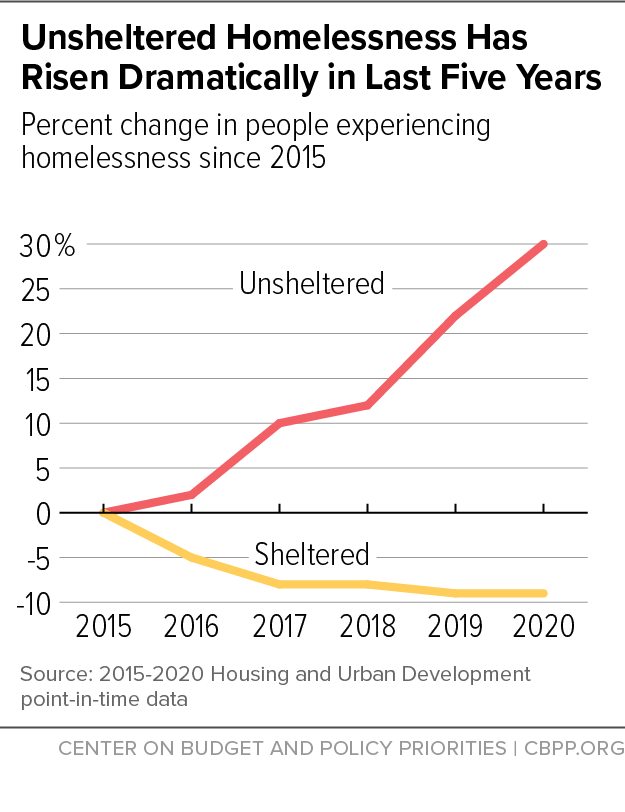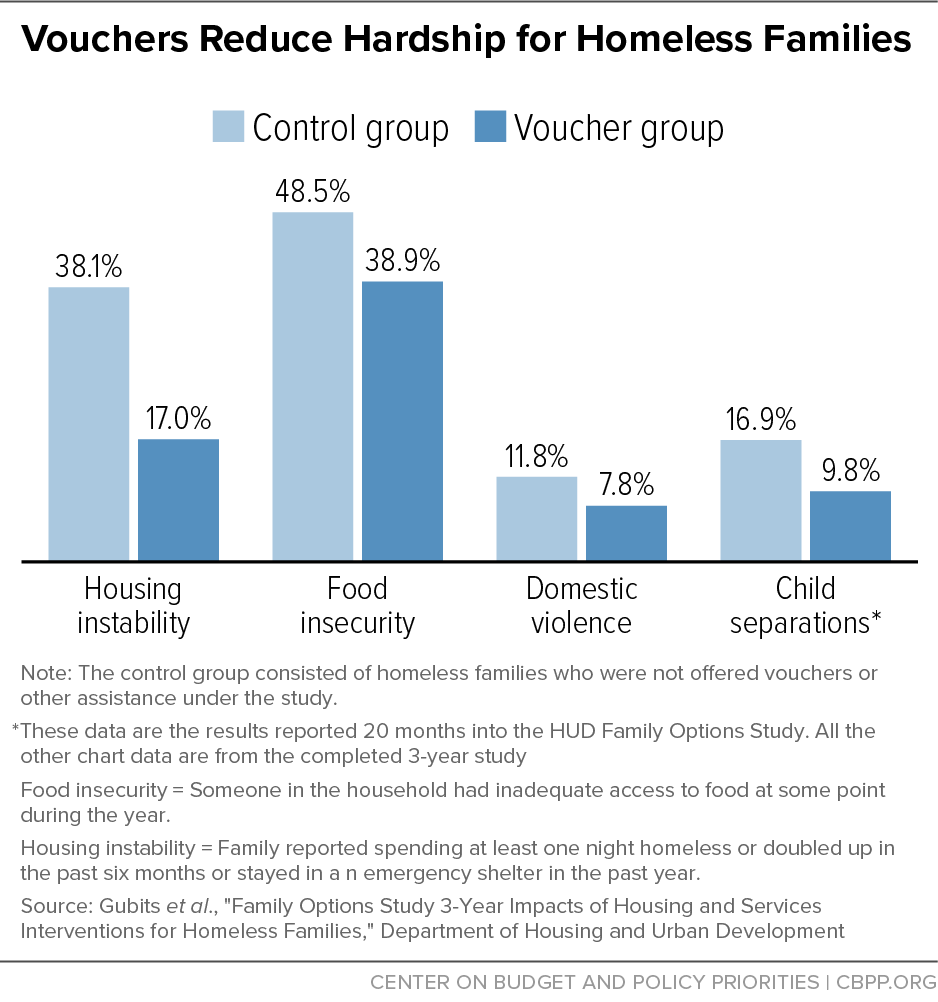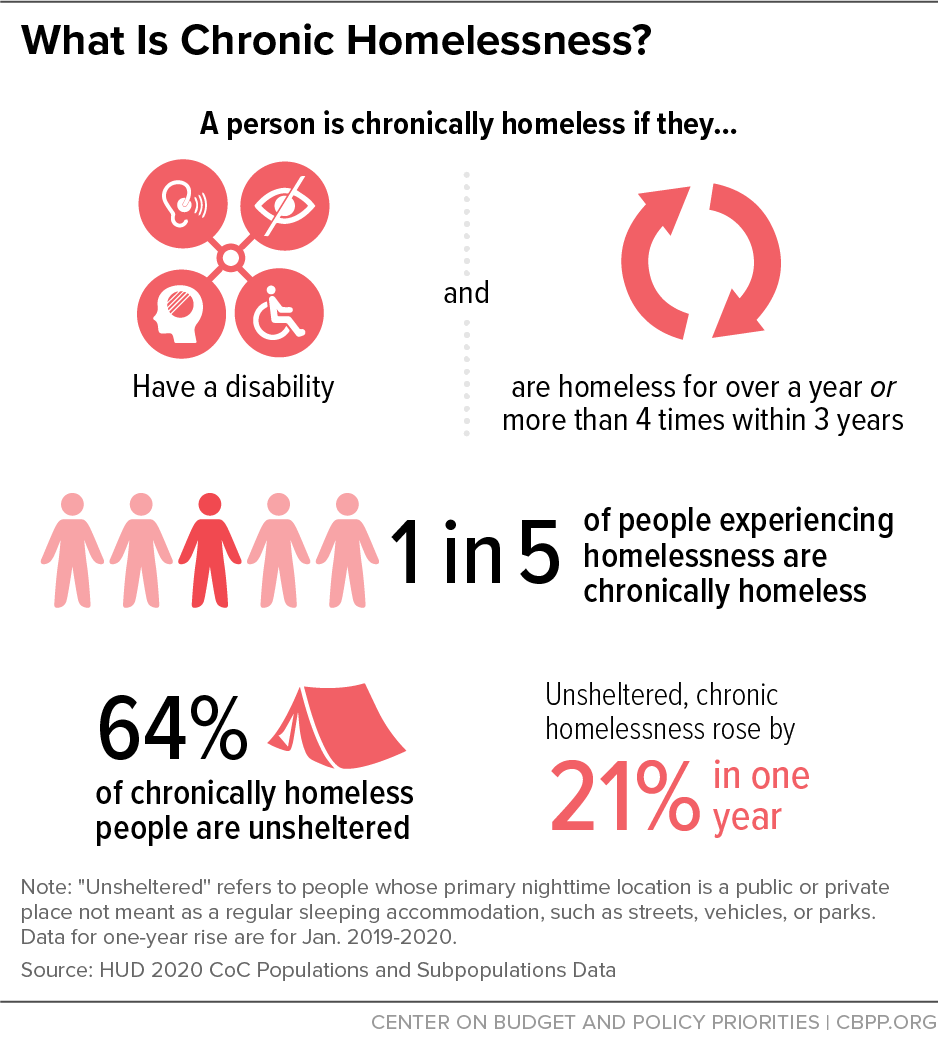More Housing Vouchers Needed to End Homelessness
Safe, stable, and affordable housing remains out of reach for millions in the U.S., which can undermine their health and safety. The first and most effective step in addressing the nation’s homelessness crisis is to provide a Housing Choice Voucher for every eligible household. At minimum policymakers should use recovery legislation to significantly expand the Housing Choice Voucher program.
Vouchers have proven highly effective at keeping people with low incomes stably housed and at reducing homelessness and overcrowding. Vouchers typically help families rent, in the private market, a modest unit they choose in the neighborhood they choose. Families pay about 30 percent of their income for rent and utilities and the voucher covers the rest, up to a cap based on local market rents.
Vouchers deliver major benefits to over 5.3 million people, more than any other rental assistance program. But they could do much more if made available to the millions now eligible but unassisted due to inadequate funding. Unlike entitlement programs such as Medicaid, rental assistance does not expand automatically to cover all who qualify. Just 1 in 4 families eligible for rental assistance receive it, and waiting lists for vouchers are years-long in much of the country.
Giving vouchers to everyone eligible would lift 9.3 million people above the poverty line, one study found, reducing the overall poverty rate by more than a fifth and the child poverty rate by over a third. Expanding vouchers would also:
1. Sharply Reduce Homelessness and Advance Equity
More than 580,000 people were staying in homeless shelters or living on the street on a single night in January 2020, before the COVID-19 pandemic. Nearly 1.45 million people experienced sheltered homelessness sometime in 2018, and unsheltered homelessness has risen every year since 2015 (see Figure 1). And in 2020, for the first time since the Department of Housing and Urban Development began collecting these data, there were fewer sheltered individuals (49 percent) experiencing homelessness than unsheltered (51 percent).
Also, our nation’s long history of racism has created disparities in education, employment, and housing. People of color disproportionately face high rent burdens, evictions, overcrowding, and homelessness. Black and Latinx people were a respective 13 and 18 percent of the U.S. population in 2020, but 40 and 23 percent of those experiencing homelessness.
Significantly expanding vouchers would be transformative, enabling communities to create a homelessness response system that quickly rehouses people, eventually making homelessness brief and rare. It would also advance equity for Black and Latinx people — lowering their respective household poverty rate gaps with white households by over a third and nearly half — and for LGBTQ people and other groups with much higher homelessness rates than the general public.
2. Improve Outcomes for Homeless Youth and Families
Expanding vouchers to everyone eligible would lift millions of children out of poverty, cutting child poverty by a third; improve educational outcomes; and provide a brighter path to adulthood. About half a million people in households with children used an emergency shelter or transitional housing between October 2017 and September 2018; 62 percent were children, nearly 30 percent of whom were under age 5. Some 113,000 unaccompanied youth experienced sheltered homelessness.
Rigorous research shows that for homeless families, vouchers reduce housing instability, family separations, domestic violence, and food insecurity (see Figure 2), as well as school absences, behavioral problems, and how often children change schools.
And vouchers give families more choices about where they live, improving access to high-opportunity neighborhoods with more resources and in turn to improved outcomes for children. A long-term study found that children whose families used vouchers to move from high- to low-poverty neighborhoods — which often have better-resourced, higher-performing schools — had substantially higher adult earnings and rates of college attendance than similar children whose families stayed in low-income neighborhoods. Adults in these moving families also experienced better health outcomes.
3. Provide Stability for Homeless Seniors and People With Disabilities
Voucher expansion is critical to ending homelessness for the hundreds of thousands of seniors and people with disabilities experiencing it each year. About half of adults — and two-thirds of veterans — living in homeless shelters reported having a disability in 2018. Over three-quarters of people experiencing unsheltered homelessness report having a physical or mental health condition. And chronic homelessness — by definition affecting people with disabilities — has been rising (see Figure 3), as has homelessness in many parts of the country among people 55 and older, who have higher rates of disability or chronic illness. Some researchers expect homelessness to continue growing for older people in the next decade unless access to affordable housing greatly improves.
Rental assistance and short-term support in navigating the rental market are enough for most people to regain long-term housing stability. However, some seniors and people with disabilities will need supportive housing, an evidence-based solution that pairs rental assistance with services such as intensive case management, ongoing housing navigation, and physical and behavioral health services for those who want them. Supportive housing can improve access to quality health care, reduce use of costly systems like emergency health services or nursing homes, and reduce incarceration. This is critical as homelessness can worsen physical and mental health. Homelessness can disrupt access to care because people experiencing it often lack access to reliable mailing addresses, a phone, or a computer to stay in contact with health care providers.
Vouchers are particularly well-suited for increasing access to supportive housing. Vouchers can be tenant-based, letting people choose a unit on the private market, or project-based, meaning the rental assistance is tied to specific units. Having vouchers readily available would help communities create a variety of integrated housing options — including supportive housing — so that older adults and people with disabilities can choose one that meets their needs without being isolated from the community.


